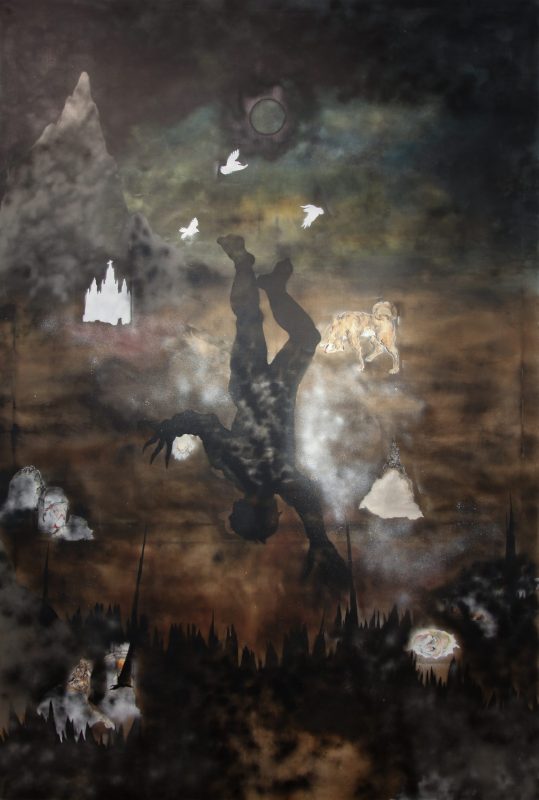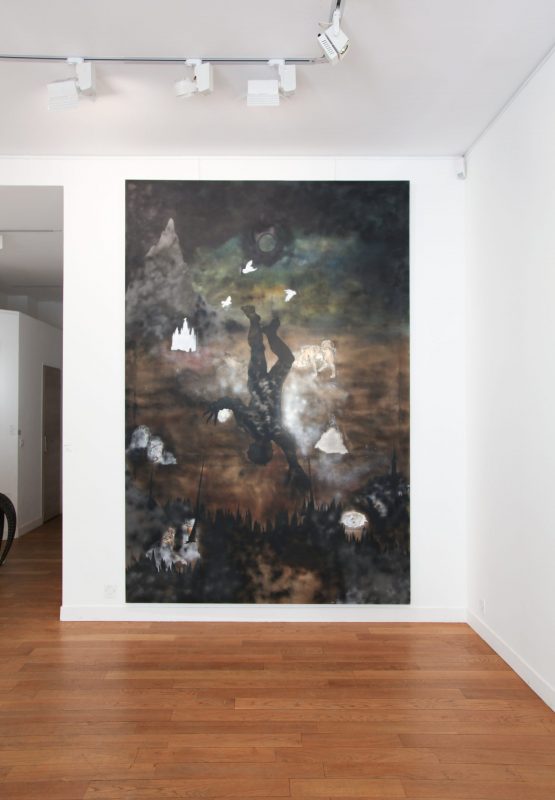After life
- Dimensions : 200 × 300 cm
- Year : 2022
- Medium : Oil
- Support : Canvas
- Signature : Signed and dated by artist
- Editions : Unique work
More informations
WORK
Raphaelle's work After Life evokes the impulses of Man and how they will influence our existence on this earth but also by echo have repercussions in the hereafter. The paradox of their coexistence stems from their direct opposition. First of all there is the drive for life, symbolized by the white doves which evoke the breath of life and the sacred as much as freedom as the quintessence of existence. Life is also the primary instinct of survival which notably includes the sexual drive represented here by the incursion of details of shunga, erotic Japanese engravings whose name literally means "image of spring", a euphemism to refer to the sexual act. Paradoxically located on tombstones, these intertwined bodies thirsting for life are themselves confronted with their own mortality. To this life drive, white and luminous, is therefore opposed a death drive in the form of a dark and clawed silhouette of a falling body, inexorably sucked into darkness. We can also recognize the figure of the hanged man. Mysterious and often misunderstood arcane of the tarot, it evokes introspection and the aspiration to position oneself in life with regard to one's philosophy and personal ethics, like a messenger who would give us access to our own conscience. True vessel to the soul caught in this mystical moment between dog and wolf, it is, half-human half-demon, the door between the worlds.
ARTIST
Raphaelle Bertran's works are constructed like painted oxymorons. Marked by what the artist claims as a “disturbing strangeness” and nourished by in-depth readings of Nietzsche, Bataille and Blanchot, they come in the form of narrative fragments. The mixture of many details and figures, both borrowed from the history of art and from his own visual lexicon, then disturbs the viewer's perception by thwarting any possibility of an all-encompassing reading of the work. The neutral and dark colored backgrounds on which his figures are placed, large black or gray “arid” expanses punctuated with a few natural elements, rocky mountains or lakes and inspired by the ahistorical landscapes of Philippe Garrel or Jodorowsky, further amplify the timeless dimension. paintings and reinforce the “disarray” (in the Blanchotian sense of the term) caused by this loss of bearings and the multitude of possible scenarios.



